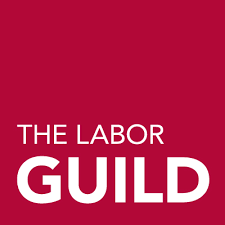March 2024 Labor History Blog: The Triangle Shirtwaist Factory Fire
by David Kowalski, Former Executive Director of The Labor Guild
Much has been written about this tragedy, and many documentaries and films have been produced about it. Should my very brief depiction of this event interest you, I encourage you to investigate our Labor History. For this is our story, the workers’ story, and a big part of our history; embrace it.
Like so many other Jewish immigrants from Russia, Isaac Harris and Max Blanck came to New York during the early 1890’s. Isaac Harris worked as a tailor in the sweatshops and became familiar with fashioning and designing clothing. Max Blanck was a garment contractor buying large amounts of fabric at low prices and therefore producing goods at a lower price. With Harris’s design skills and Black’s business skills they developed a woman’s blouse called the “shirtwaist” (more of a men’s style shirt that was looser fitting and more comfortable than the Victorian style blouses of the day). At 25, Blanck married an immigrant from Russia whose cousin was married to Harris. The two opened the Triangle Shirt Waist Company in 1900.
With business soaring, the entrepreneurs were well on their way to earning their nickname “Shirtwaist Kings” of New York. Over time, the duo sought out a larger facility and moved into the new Asch Building in Greenwich Village. What the new occupants did not know was that the architect was given special permission to make only two staircases instead of three. A poorly made fire escape that stopped at the second floor was authorized to be the third staircase. Exit doors were made to open inward which made it impossible to open when people pushed against it.
By 1908 sales hit the one-million-dollar mark, allowing the partners to move into large brownstones on the Upper West Side overlooking the Hudson River. There they each employed 4 servants and were chauffeured to and from work each day. To stay competitive with the other 11,000 manufacturers in New York, it was of utmost importance to keep the product price down. The foreman would order the secondary exit doors locked to prevent theft and unauthorized breaks. Foremen unlocked doors only after checking women’s handbags, a practice not unusual in the industry of this time period along with a constant check of inventory and supplies. Because of these conditions the International Ladies Garment Workers Local 25, who were mostly immigrant Jews and Italians, were well versed in Marx’s doctrine (socialist democracy). Therefore, they embraced efforts to organize for better treatment and went on strike in 1909, after Harris and Blanck fired 150 union sympathizers. Blanck and Harris refused to adapt to any of the demands, taking the strike as a personal insult. Refusing to meet their demands, they hired thugs and police to beat and harass picketers. Only when the strike went on and caused lower profits did the owners agree to the demands. However, they still would not recognize the Union. The owners felt the Union was the greatest danger to their control over the workplace and production.
Just 13 months after the strike, around 4:40 PM on Saturday, March 25, 1911, a discarded lit match or cigarette butt found its way to the scrap cloth bin. A fire on the eighth floor started and within 20 minutes became the deadliest industrial disaster in the history of New York City. Firefighters arriving around 5:00 PM could not erect the ladders because of the bodies which covered the sidewalk. The first to jump to their deaths were a couple who kissed and held hands as they jumped out of a window. Between locked and blocked doors, the workers’ stairway exits became impassable within 3 minutes. The workers then took to the fire escape that collapsed due to heat, weight, and poor construction. Twenty workers fell over 100 feet to their deaths; elevators overloaded with bodies broke down as people pried doors open and leapt to their death. Fire company ladders could not reach beyond the sixth floor as people jumped. Some were ablaze as they leapt while the foreman, who held the keys to the locked doors, fled through another stairway. The visual effect on bystanders ranged from horror to fainting and in the end the fire left 146 dead; 129 women and 17 men. The results in the following manslaughter trial against Harris and Blanck led to acquittal.
The prosecution failed to prove that the two knew the doors were locked. Eventually, Harris and Blanck settled with the families of the victims agreeing to pay $75.00 per deceased person.
However, the two owners collected $400.00 per death from the insurance company and pocketed more than $60,000. Disgusting.
Join Our Mailing List
For Guild news, Labor School updates, Workshops, and CGA information.

